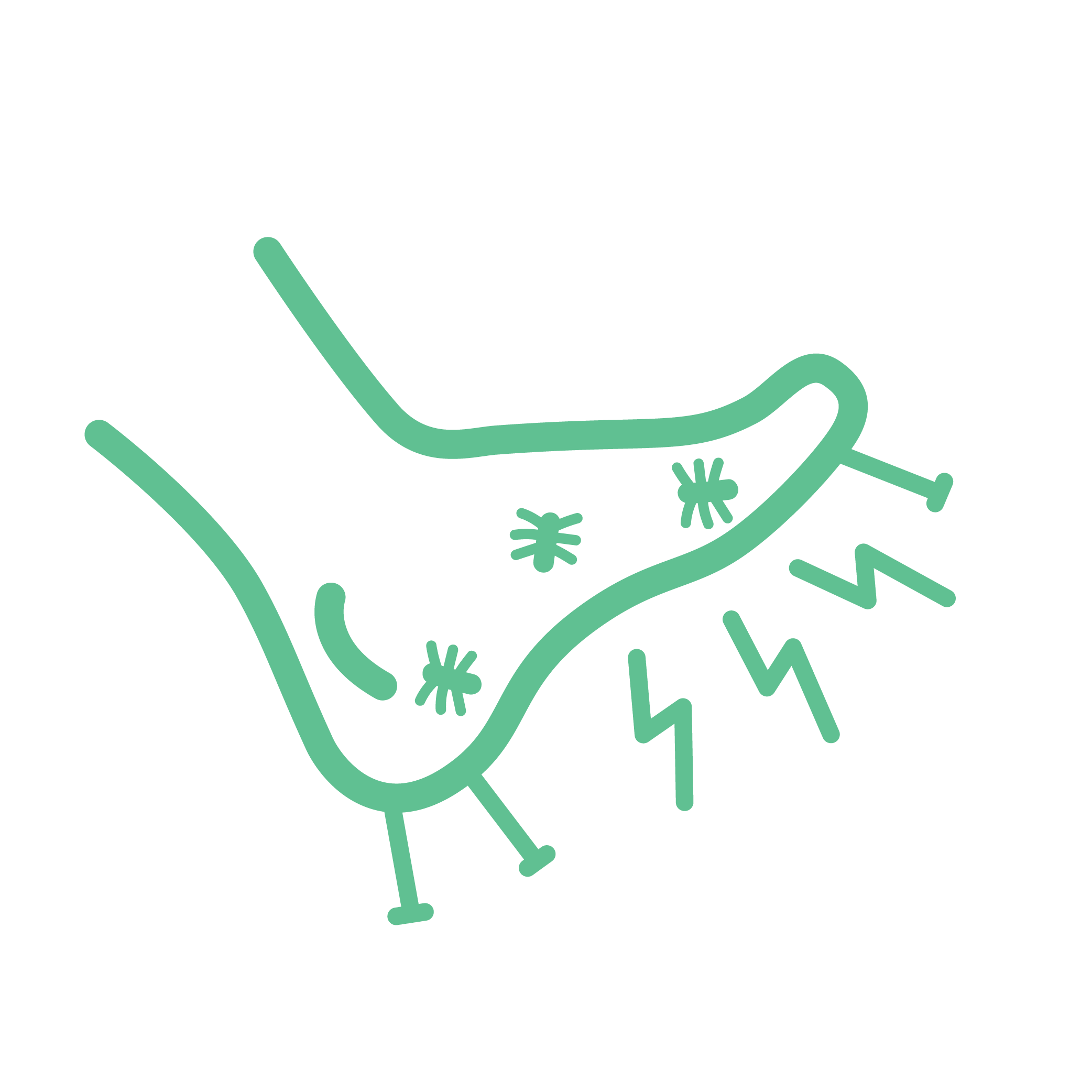

PRINE Podiatry is a complementary offering toward our goal of providing a more comprehensive level of care to our patients.

When You Have Diabetes, You May Develop a Kind of Nerve Damage Called Diabetic Neuropathy

Are you sick of dealing with those pesky warts? Well, PRINE Podiatry is here to inform you of their brand new effective Swift Technology used to treat and prevent the emergence of warts. Verrucae, also known as plantar warts, is a common foot issue people deal with on a regular basis.
It can often be embarrassing and difficult trying to cover up these warts due to their appearance and placement. Most often, patients will get these types of warts on the bottom of their feet or on the balls of their heels. Luckily, you don’t have to be embarrassed any longer!








Call us at 516-951-1110
Get in touch with PRINE Health today by calling (516) 951-1110 or fill out the form below.
To schedule an appointment with us, click here.
PRINE Health is a multispecialty group focused on chronic kidney disease care, with expertise in nephrology, kidney health, vascular care, endocrinology, gynecology, infusion therapy, podiatry, rheumatoid arthritis, and urology. We are proud to offer care to patients across Nassau County, Long Island, Queens, and the surrounding New York, NY areas.
Athlete’s Foot Isn’t Just A Rash Caused By Sweaty Feet; It’s A Contagious Fungal Infection That Affects Up To 25% Of Men, Women, And Children At Any Given Time. If You Have Athlete’s Foot And You Live In The North Shore Area, Contact PRINE Podiatry By Phone Or Online Booking Form For Athlete’s Foot Treatment.
Athlete’s foot is an infection caused by the same fungus that’s implicated in ringworm and jock itch.
The fungus thrives in warm, moist conditions, such as those found at the:
-Beaches
-Pools
-Gyms
-Saunas
-Steam rooms
-Showers
-Bathrooms
You can pick up the fungus that causes athlete’s foot by walking barefoot in warm, moist environments such as pools and gyms. You can also get it from sharing shoes, socks, towels, flooring, or a bed with someone who has athlete’s foot. You’re more likely to develop athlete’s foot if you have sweaty feet, damp socks, or tight-fitting shoes. Men are more likely to catch athlete’s foot than women are.
Athlete’s foot tends to be red, scaly, and itchy. Athlete’s foot usually first appears between the toes or on the soles of your feet. In some cases of athlete’s foot, you may also have blisters, ulcers, or dry patches. Athlete’s foot may climb up the sides of your foot and can even spread to other parts of your body. If you scratch your itchy athlete’s foot rash, be sure to wash your hands afterward to avoid spreading it.
Athlete’s foot tends to be red, scaly, and itchy. Athlete’s foot usually first appears between the toes or on the soles of your feet. In some cases of athlete’s foot, you may also have blisters, ulcers, or dry patches. Athlete’s foot may climb up the sides of your foot and can even spread to other parts of your body. If you scratch your itchy athlete’s foot rash, be sure to wash your hands afterward to avoid spreading it.
Ingrown Toenails Are So Common That You May Not Think You Need To Treat Them, But They Can Cause Infections And Other Problems. PRINE Podiatry Helps Get Your Toenail Back In Position And Treats Your Infection Or Irritation. Contact Our Office For Ingrown Toenail Treatment By Calling Or Filling Out The Online Form.
Ingrown toenails occur when your toenail grows into the side of your toe rather than straight outward. You can usually see that the edge of your nail is buried in the skin at the edge of your nail plate.
Ingrown toenails are usually painful. Your body reacts to the toenail as if it were a foreign body and initiates an inflammatory response. If you notice symptoms of infection, you should contact Dr. Sands immediately. You may have infected toe if you notice:
● Reddened skin
● Swelling
● Pus
● Foul smell
The most common cause of ingrown toenails is footwear that’s too tight and cramps your toes. Other causes may include:
● Cutting your toenail too short
● Cutting your toenail on a curve, rather than straight
● Trauma
● Congenital deformities
● Medical conditions such as retronychia or pincer nail
● Excessive foot sweating that softens the nail
● Obesity
● Hard toenails
If your ingrown toenail is infected or painful, you should contact our office for immediate treatment. Untreated ingrown toenail infections are serious. They can even spread to your bones. You should also reach out to our office if you notice an ingrown toenail and have diabetes, peripheral arterial disease, or any other nerve-related condition. Even a non-symptomatic ingrown toenail could lead to severe complications in these cases.
If your toe is infected, our podiatrists would first clear the infection with topical antibiotics or silver nitrate. They may use a local anesthetic and
then move or cut away the portion of your nail that grew into your skin. They may also place a splint underneath the nail or tape it to another toe so that it grows properly. Surgery is rarely needed. Even after surgery, you can walk and go about your normal routine after just two days of recovery. Don’t let an ingrown toenail become infected or develop complications.
Contact PRINE Podiatry for treatment by phoning his friendly staff or using the online booking form.
Falls Are The Number One Cause Of Injury In Older Adults In The United States And Occur At The Rate Of One Per Second Every Single Day. If You’ve Tripped, Fallen, Or Have Balance Problems, Our Podiatrists Can Help You To Feel Stable And Confident Again. If You Are In The North Shore Area And Need Help Regaining Your Balance, Contact PRINE Podiatry By Phoning Our Supportive Team Or Booking An Appointment Online.
Balance problems increase with age. Numerous issues can affect your ability to walk steadily, including, but not limited to:
-Stroke
-Vertigo
-Middle-ear problems
-Parkinson’s disease
-Meniere’s disease
-Arthritis or other joint problems
-Weak muscles or tendons
-Nerve damage (diabetic neuropathy)
Everyone may trip or fall from time to time but, if you’re older, a trip or fall could be deadly. Approximately 20,000 older men and women die per year due to complications from a fall. If you’re not sure whether you have balance problems, ask yourself:
-If you’ve fallen in the past?
-Do you frequently slip, trip, or almost fall?
-Do you stumble a lot?
-Do your feet shuffle when you walk?
-Do you ever use the wall or furniture for support when walking?
-Do your legs or ankles feel wobbly or unsteady?
If you answered yes to any of these questions, you might have a balance problem. As part of your evaluation at PRINE Podiatry, our doctors give you a Fall Assessment test. If you score higher than 10, you have a balance problem.
When our podiatrists evaluate your balance issues, we also look for signs of underlying diseases. If we suspect that Parkinson’s disease or another condition causes your balance problems, we may refer to you another specialist. When your balance problems are caused by diabetic neuropathy, arthritis, or weak muscles or tendons, our doctors may recommend physical therapy. We can teach you strengthening and stretching exercises that you can perform at home, too.
We can also fit you with an incredibly lightweight fall-prevention device called a Moore Balance Brace (MBB). The lightweight ankle and foot support fits around your lower leg and slips easily into a sneaker or shoe to reduce your risk of falling. The MBB is lighter than a cellphone but strong enough to keep you stable and allows you to walk with confidence. We also recommend fall-prevention shoes to use with the MBB. Combined with the strengthening exercises you learn in physical therapy, the MBB can reduce your risk of falling by up to 60%.
Don’t risk a life-endangering fall by ignoring your balance problems. Contact us for a Fall Assessment Test today by filling out the online form or calling his friendly team over at PRINE Podiatry.
If You Suffer From Foot Pain, You May Worry That You Need Surgery Or Other Traumatic Interventions To Alleviate It. Our Podiatrists Use High-Quality, Custom-Designed Orthotics To Alleviate Most Foot And Ankle Disorders Without Surgery Or Other Invasive Therapies. When Your Feet Hurt, Contact The PRINE Podiatry Helpful Staff By Phone Or Online Form For A Custom-Orthotics Consultation.
Orthotics are custom-designed, cushioning shoe inserts that fit the unique contours of your foot and alleviate any foot pathologies you may have. Custom-designed orthotics precisely balance your foot so that it’s in a healthy and functional position during each stage of a gait cycle. Depending on your needs, our doctors may order orthotics that are molded for off-weight bearing, semi-weight bearing, or full weight-bearing.
Orthotics can correct numerous foot disorders and anatomical abnormalities. Some conditions that may improve with custom-designed orthotics include:
-Heel spurs or heel pain
-Ball-of-foot pain
-Ankle pain
-Pronation
-Chronic shin splints
-Runner’s knee
-Collapsed arch
-Plantar fasciitis
At evaluation, our podiatrists takes a detailed history and perform a comprehensive physical examination to determine whether you would benefit from orthotics.
Over-the-counter shoe inserts may work just fine for you. However, if your pain persists, you may benefit from inserts that are tailor-made for your unique foot.
If a podiatrist recommends orthotics, we test your range-of motion and muscle strength in the affected foot. These tests help us identify issues such as weak, loose, or overly tight muscles or tendons. In some cases, our doctors may perform an in-office ultrasound to get a better look at your soft tissues, or may order an X-ray to check for bone spurs or fractures. We then have you sit and place your foot into a mold in a neutral position. The mold is sent to a laboratory along with specifications for how to manufacture the orthotic so that it corrects your foot disorder and creates a comfortable and healthy gait. When your orthotics are ready, we ensure that they fit correctly. You then return to the office in a couple of weeks for a follow-up visit so that our podiatrists can verify that the orthotics are working well and that your pain and foot problems have improved.
When you want relief from foot pain, contact PRINE Podiatry about custom designed orthotics. You can book a consultation online or call our supportive staff today.
Large Bony Protrusions On The Outer Edge Of Your Big Toe Aren’t Only Unattractive And Possibly Painful, But They’re An Indication That Your Toe Bones Are Deformed And Misaligned. If You’re Looking For An Effective Solution For Your Bunion Pain, Call The Office To Schedule An Appointment, Or Book A Consultation Online.
A bunion is a deformity of the metatarsophalangeal (MTP) joint at the base of your big toe. Bunions may be small at first but grow without treatment. Your big toe can push your other toes out of alignment, too.
Pressure on the MTP joint causes most bunions. The pressure is usually caused by shoes that are too tight or otherwise don’t fit. Pressure on your big toes destabilizes the bones, forcing them toward your other toes. The pressure also irritates the MTP joint, so that it enlarges over time. However, not all bunions are caused by tight shoes. Conditions that destabilize or irritate your big toe, such as arthritis, can cause MTP joint deformity. You may also have a congenital foot abnormality that causes or contributes to your bunions.
Large bunions usually cause pain or discomfort when you walk. Because the bunion rubs against your shoe, your skin in that area may become red, swollen, and painful. You may also have difficulty moving your big toe, especially if you have arthritis. Eventually, your big toe may overlap or underlap your other toes, compressing and crowding them. The pressure from the bunion might create corns between your compressed toes. In some instances, untreated bunions cause a condition called hammertoe, in which the top of your toes curves downward. You could also develop bursitis — inflammation of fluid-filled pads that cushion tissues near your joints — or metatarsalgia (inflamed, painful ball of the foot).
Most bunions resolve with the gentle, minimally invasive therapies that our podiatrists favor. If your bunions are related to your footwear, he first recommends switching to shoes that have ample toe room, low heels, and arch support. He may also recommend:
-Over-the-counter bunion and corn pads to increase comfort
-Non-steroidal anti-inflammatory drugs (NSAIDs) to alleviate pain
-Applying heat or ice to control swelling
-Custom-designed orthotics to reposition and support your toes.
Don’t soldier through the pain of a bunion. Contact PRINE Podiatry today for bunion treatment by contacting his friendly team or booking an appointment online.
If You Feel A Stabbing Sensation In Your Heel Or Arch Upon Awakening Or After Exercise, You May Have Plantar Fasciitis. If You’re Located In The North Shore Area And Have Foot Pain, Reach Out To PRINE Podiatry And Our Helpful Staff By Booking A Plantar Fasciitis Consultation Online Or By Phone.
Plantar fasciitis is an inflammation of the plantar fascia, which is a thick strip of tissue under the sole of your foot that connects your heel bone to your toes. The plantar fascia supports your foot muscles and the arch of your foot, acting as a shock absorber when you walk. Over-stretching the plantar fascia creates tiny tears in the tissue that lead to inflammation. As a result, you may also develop small, painful, bony growths on your heel called heel spurs. Some cases of plantar fasciitis are idiopathic, meaning there’s no known cause.
According to a study published by the NIH, heel pain accounts for approximately one million visits to podiatrists and other physicians per year. Women suffer from plantar fasciitis more than men do, probably because of high heeled shoes that stress their feet. You’re also more likely to develop plantar fasciitis if you:
-Run, dance, or jump frequently
-Are overweight
-Are older
-Wear thin-soled or high-heeled shoes
-Have tight Achilles tendons or a high arch
-Have an unhealthy gait or foot position
-Work on your feet or stand for prolonged periods
Most people with plantar fasciitis describe the pain as being “stabbed” in the foot, particularly in the heel. This stabbing pain is worse upon taking the first few steps in the morning or after sitting or reclining for extended periods. You also might feel a stabbing pain after running or other exercises. While you’re active, however, you probably have no discomfort.
Usually plantar fasciitis can be diagnosed through your symptoms and physical examination alone. If we suspect you have heel spurs or other complicating factors, we may order an X-ray or perform an inhouse ultrasound study. Most cases of plantar fasciitis resolve in a few months with conservative treatment. Our podiatrists may recommend steps such as:
-The RICE protocol (Rest, Icing, Compression, Elevation)
-Non-steroidal anti-inflammatory drugs to control pain
-Gentle stretching and strengthening exercises
-Taping the bottom of your foot
-Wearing a night splint
-Custom-designed orthotics
If these conservative measures don’t improve your symptoms, our doctors may recommend steroid injections or minimally invasive radiofrequency ablation to dull nerve pain. If heel pain or foot pain is compromising your quality of life, contact PRINE Podiatry for a plantar fasciitis consultation.
When You Have Diabetes, You May Develop A Kind Of Nerve Damage Called Diabetic Neuropathy. This May Alter Your Sensitivity To Pain, Cause Numbness And Tingling. If Gone Unmanaged, Diabetic Neuropathy Can Lead To Infection, Foot Deformity, And Potentially Amputation.
When you have diabetes, the high levels of blood glucose that circulate in your blood can damage your nerve fibers and interfere with their ability to send signals. You can develop diabetic neuropathy in any portion of your body, but the feet are most often affected. You may have one or more of several types of diabetic neuropathies, but the one that affects your feet most often is called peripheral neuropathy. Peripheral neuropathy can affect either your motor or sensory responses. Sensory issues are most common in diabetic foot pain.
You’re more likely to develop diabetic neuropathy if your disease is poorly controlled or you’ve had it for a long time. Other risk factors are:
-Being overweight or obese
-Smoking
-Having kidney disease
When you have sensory neuropathy, your nerves have an exaggerated response to pain or sensation. For instance, the simple act of putting on your socks may be excruciating. Some other symptoms include:
-Burning or tingling
-Stabbing sensation or sharp pain
-Numbness
-Cramps
-Balance and coordination issues
-Loss of reflexes
-Loss of muscle strength
-Infections, ulcers, and deformities
Numbness is a particularly dangerous form of sensory neuropathy because you could severely injure your
feet without realizing it. If your feet tend to be numb, examine them daily for signs of damage, and visit
Dr. Sands regularly to avoid serious complications, including limb loss.
Our podiatrists use state-of-the-art, minimally invasive treatments to improve diabetic neuropathy. His preferred therapies are vitamin supplementation, diabetes control and the use of MicroVas electrical stimulation. MicroVas is an advanced form of ionic therapy that was developed by U.S. military laboratories to treat Navy Seals who suffered hypothermia. The MicroVas current penetrates the entire treatment area to stimulate blood flow and tissue oxygenation. This leads to angiogenesis, a process through which your body heals and rebuilds damaged tissues.
If you think you have diabetic neuropathy, contact PRINE Podiatry for relief by booking an appointment online or calling his helpful staff.
Warts That Are On The Bottom Of Your Feet Can Cause Pain When You Walk And Even Spread To Other Areas Of Your Body. If You’ve Noticed Warts Or Rough Patches On Your Feet, We Can Help .
Warts are non-cancerous, but highly contagious, skin growths that are caused by the human papillomavirus (HPV). When warts appear on the soles of your feet, they’re called “plantar warts.”
Because HPV thrives in warm and moist conditions, you can pick it up in places where you’re prone to walk barefoot, such as pools and gyms. When the skin on your feet is irritated or cut, you’re more likely to pick up an HPV infection. If you have plantar warts, you can also spread your warts to other people by walking barefoot in such environments.
Plantar warts are small — usually no larger than the head of a pencil eraser — and can be flat or raised. When you have raised plantar warts, you may feel like you have rocks in your shoes when you walk. Warts can grow in clusters and cover large areas of your feet. Sometimes plantar warts contain a small black dot, known as a seed. Occasionally plantar warts look like calluses, but they’re more painful than calluses.
Plantar warts, like all warts, tend to resolve on their own after months. However, they can be embarrassing and painful. The older you are, the longer they may last. Sometimes over-the-counter (OTC) wart remedies resolve your warts. If your warts are extensive or don’t respond to OTC treatments, contact us for wart removal.
Our podiatrists prefer minimally invasive treatments whenever possible. They can remove your warts in the office with either cryotherapy or pulse-dye laser treatment. Both cryotherapy and pulse-dye laser treatment only require local anesthesia, but they’re otherwise quick and pain-free procedures. We remove the thickened skin, destroy the blood vessels that feed the wart, and kill the HPV. After removing the warts, you can return to your normal activities; there’s no downtime at all. When our podiatrists treat your warts with cryotherapy or pulse-dye laser, they’re less likely to reoccur than if they resolved on their own. Treat your warts and prevent recurrence by contacting PRINE Podiatry for plantar-wart removal. You can phone our friendly staff or book a wart consultation online.
Do you have a sore on your foot that just doesn’t want to heal? Are you a diabetic with poor sensation, tingling, or pins and needles on your feet? Are you a smoker with cold feet? Have you ever had an amputation of a toe or part of your foot? If you answered yes to any of the above questions, you may be at risk of developing an ulcer on your feet.
It is currently estimated that over 30 million Americans have diabetes. Approximately 4% of those with diabetes will develop a diabetic foot ulcer costing the healthcare system annually about 6.3 billion dollars in healthcare costs.
Medicare recipients who are diabetic often qualify for Medicare’s diabetic shoe program. The fitting of appropriate shoes can greatly reduce the risk of developing a foot ulcer. Our podiatrists are trained in the surgical management of chronic wounds and limb-threatening infections.
If you believe you are at risk for a foot ulcer, please contact PRINE Podiatry by booking an appointment online or calling the office.
Do you have chronic aches and pains in your feet and ankles? Do you suffer from burning and tingling in your feet? Have you suffered from an injury to your foot or ankle? Do you have an open wound on your foot that just doesn’t heal? If you answered yes to any of these questions, a multiwave locked system (MLS) laser may be an answer.
Laser Therapy is the use of specific wavelengths of light to treat painful and debilitating conditions.
Light energy enters the damaged cells and stimulates inter-cellular activity. This reduces pain in the area and speeds the recovery of the damaged cells. Once the cells recover, the healing process is complete.
MLS Laser Therapy is a painless treatment that lasts an average of 8 minutes. You may experience a comfortable sensation at the point of application.
Most people experience positive results in 1 to 3 treatments, with the average course of treatment being 7 to 10 sessions. Swelling is greatly reduced and there is a rapid relief of pain. Acute conditions usually subside quickly, typically within one phase of treatments, while chronic conditions can be controlled with regular treatments. The effects of MLS Laser Therapy are cumulative; therefore, expect to see improvement as you proceed through your treatment plan. It is critical that once you start, you complete the course of treatments recommended by your doctor or symptoms are likely to reoccur.